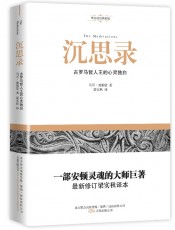since the days of the ancient canaanites palestine has been often invaded. the composite life of the towns we have already noted. the history of palestine shows how composite the life of the whole land has become. its central position among the nations is known to every one. to the south, shut off by but a strip of desert, are egypt and africa; to the east lie arabia, persia, and the farther asiatic continent; easily accessible on the north are asia minor, turkey, and russia; while ships almost daily arrive which unite it on the west with europe and america. yet one day’s ride along any of its chief highways will do more to show the traveller what that central position practically means, than all his study of it in books and on maps. for in one day’s ride he may meet kurds, circassians, arabs, syrians, turks, cypriotes, greeks, russians, egyptians, nubians, austrians, french, germans, english, and americans. in a mission school in damascus were found some little dark-eyed syrian children speaking english with an unmistakable australian accent. they had been born and brought up in queensland.
it is in hauran that this mixture of races is most forcibly thrust upon one’s notice. in the villages south of damascus, the crowd which gathers round the tents is sure to contain several smiling negroes, some of{86} them branded on the cheeks; circassians, with sickle-shaped nose and thin lips, sharp-featured and small-limbed men with an untamable expression on their bitter faces; arabs, darker of complexion, and more languid of eye; and turkish soldiers, thin and smallpox bitten. there are to be found the jew, sneering complacently at the inferior world; the fanatical moslem, who will break the water-bottle your lips have touched; the druse, who objects to coffee and tobacco, and to whom you hesitate to say “good morning,” lest he may have conscientious scruples about that; and the cross-bred ruffian, who has no scruples about anything. everything helps to strengthen the impression. in damascus it seems always to be sunday with one or other portion of the population, and a different set of shutters are up each day for nearly half the week. the railway, it might be supposed, must have blended the life of the composite east, but it only serves to emphasise the compositeness. in one of the hauran stations we had some hours to wait. we spread our rugs in the shadow of the station-house, with a turkish officer, an arab soldier, and a long line of camels to watch till lunch was ready. when the time came, the hall of the booking-office was cleared of passengers of a dozen different nationalities, and our lunch was spread on the floor, just in front of the ticket-window! the train came at last, an hour late, drawn by a rather blasé-looking engine. then began that babel of tongues which shows how nations meet in the east. all the world seemed to have sent its representatives to that{87} train—its wealth to the white-cushioned first-class; its middle-class to the bare boards of the second; its poverty to the cattle-trucks dignified by the name of third,—while behind the carriages came two waggons loaded with grain, their owner perched high on one, and a baby’s cradle on the other.
all this phantasmagoria of the present helps one to realise better the extraordinary history of the past. for thousands of years the flow of manifold human life through syria has been continuous. at the mouth of the dog river, whose valley has from time immemorial served as a main passage from the sea to the east for armies, there is, cut in smoothed faces of the solid rock, the most remarkable collection of inscriptions in the world. the assyrian slab shows still the familiar bearded figure of the monarch with his air of strength untempered by compassion. the egyptian slab records its invasion in hieroglyphics. the greek, roman, and french stones tell their similar tale. throughout the land the same thing repeats itself. in hauran we found a fine egyptian hieroglyphic embedded in the mud-and-rubble interior wall of a private courtyard, an altar of the time of titus lying exposed on a hillside, and many graeco-roman inscriptions built into the walls of houses.[15] the five names which we have selected from so great a number of invaders are those whose mark upon the land has been deepest and most permanent.
